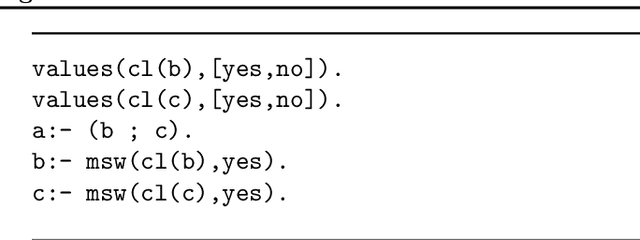Viterbi training in PRISM
Paper and Code
Nov 29, 2013


VT (Viterbi training), or hard EM, is an efficient way of parameter learning for probabilistic models with hidden variables. Given an observation $y$, it searches for a state of hidden variables $x$ that maximizes $p(x,y \mid \theta)$ by coordinate ascent on parameters $\theta$ and $x$. In this paper we introduce VT to PRISM, a logic-based probabilistic modeling system for generative models. VT improves PRISM in three ways. First VT in PRISM converges faster than EM in PRISM due to the VT's termination condition. Second, parameters learned by VT often show good prediction performance compared to those learned by EM. We conducted two parsing experiments with probabilistic grammars while learning parameters by a variety of inference methods, i.e.\ VT, EM, MAP and VB. The result is that VT achieved the best parsing accuracy among them in both experiments. Also we conducted a similar experiment for classification tasks where a hidden variable is not a prediction target unlike probabilistic grammars. We found that in such a case VT does not necessarily yield superior performance. Third since VT always deals with a single probability of a single explanation, Viterbi explanation, the exclusiveness condition that is imposed on PRISM programs is no more required if we learn parameters by VT. Last but not least we can say that as VT in PRISM is general and applicable to any PRISM program, it largely reduces the need for the user to develop a specific VT algorithm for a specific model. Furthermore since VT in PRISM can be used just by setting a PRISM flag appropriately, it makes VT easily accessible to (probabilistic) logic programmers. To appear in Theory and Practice of Logic Programming (TPLP).
 Add to Chrome
Add to Chrome Add to Firefox
Add to Firefox Add to Edge
Add to Edge